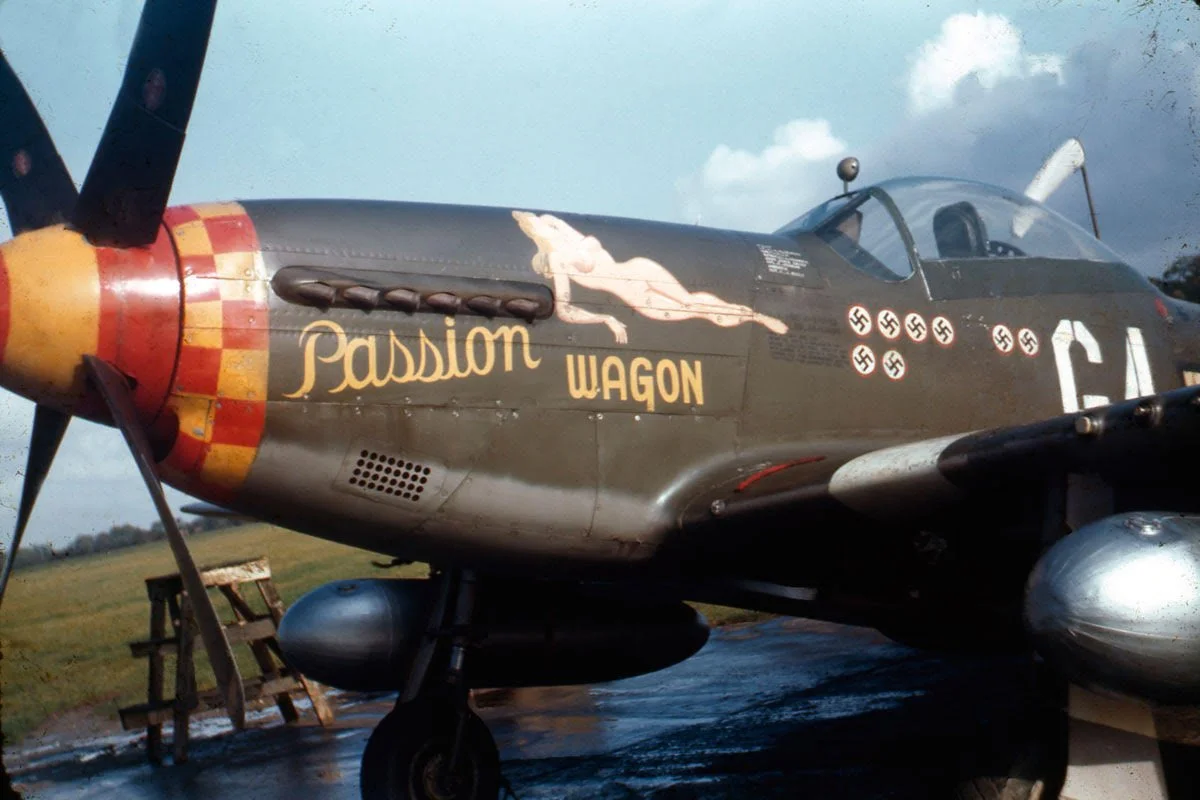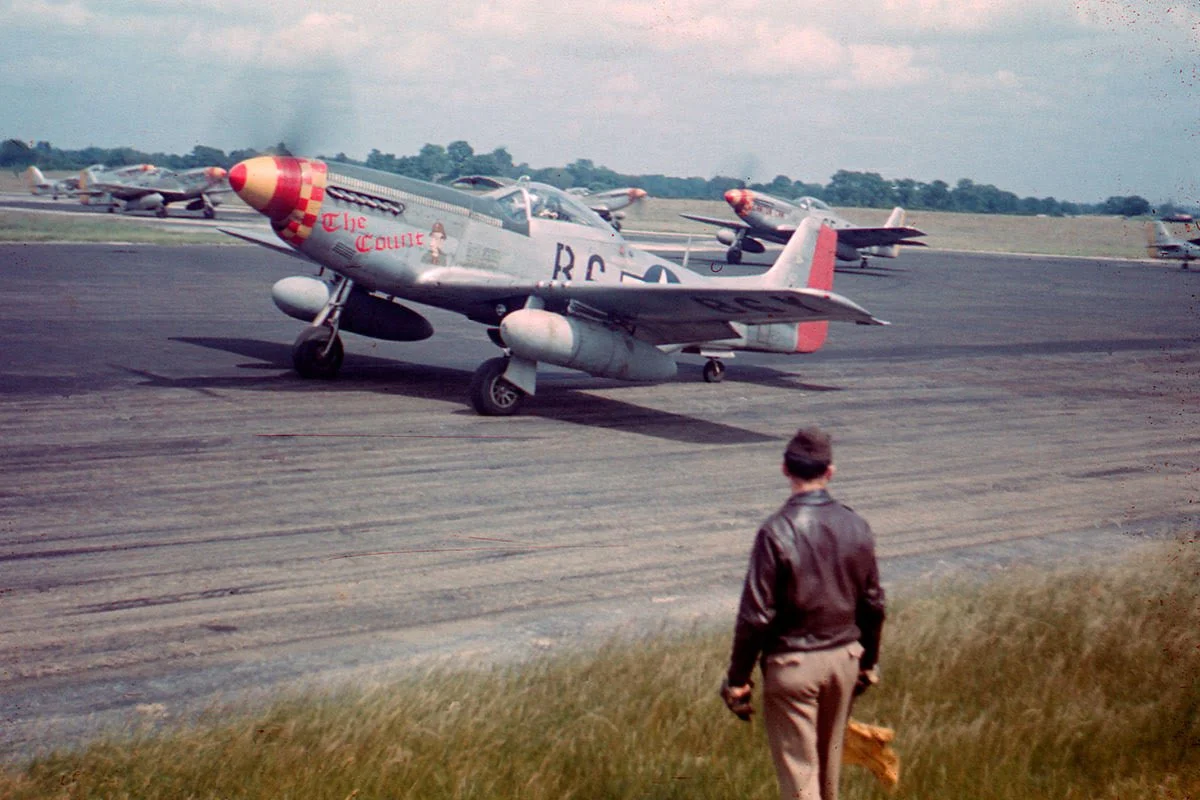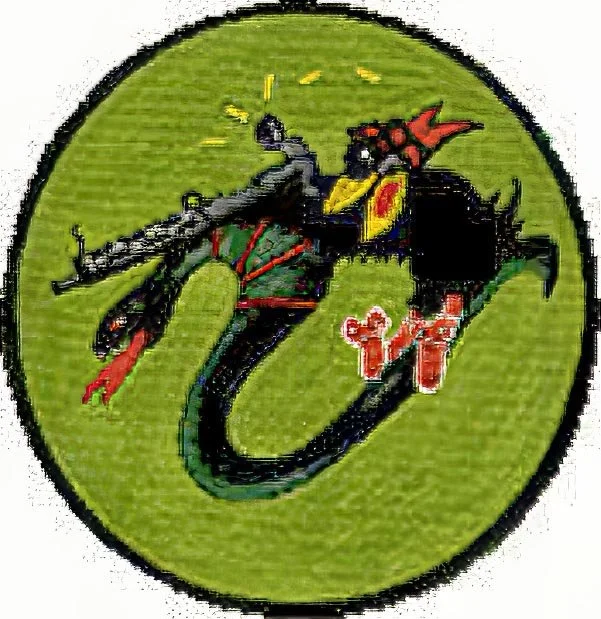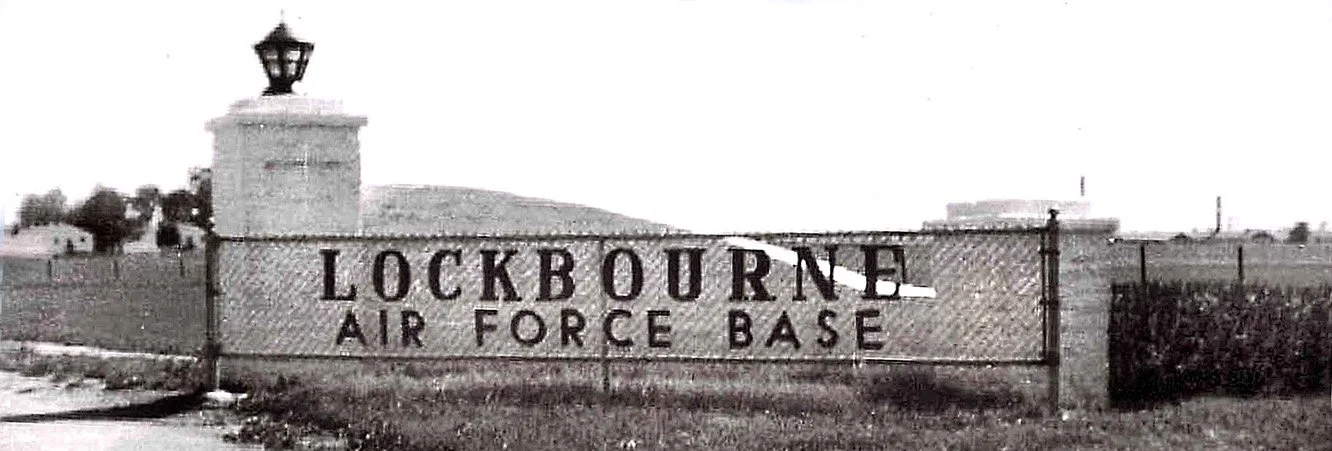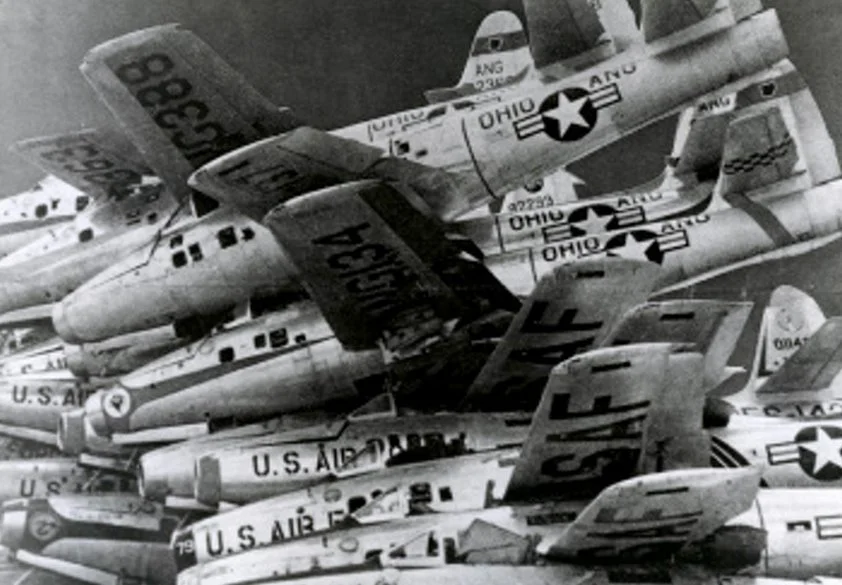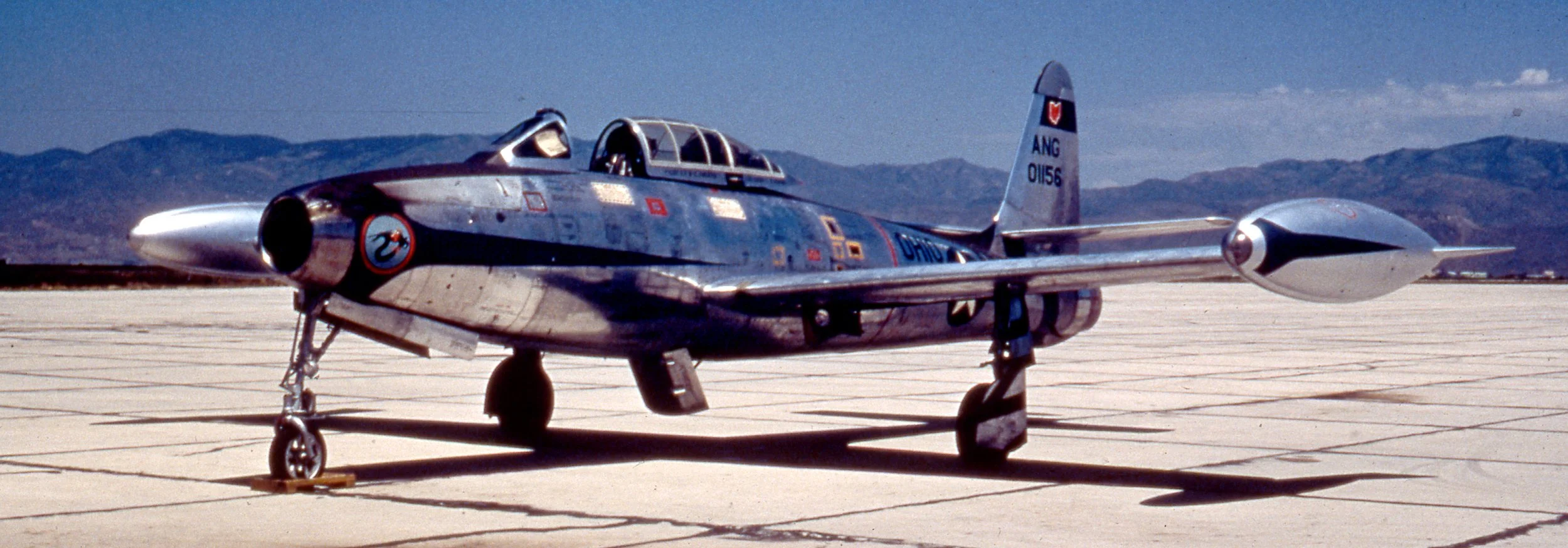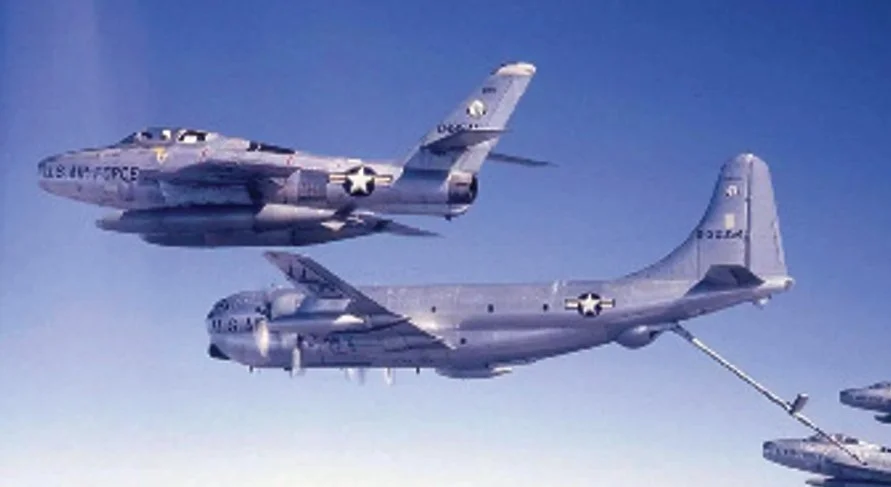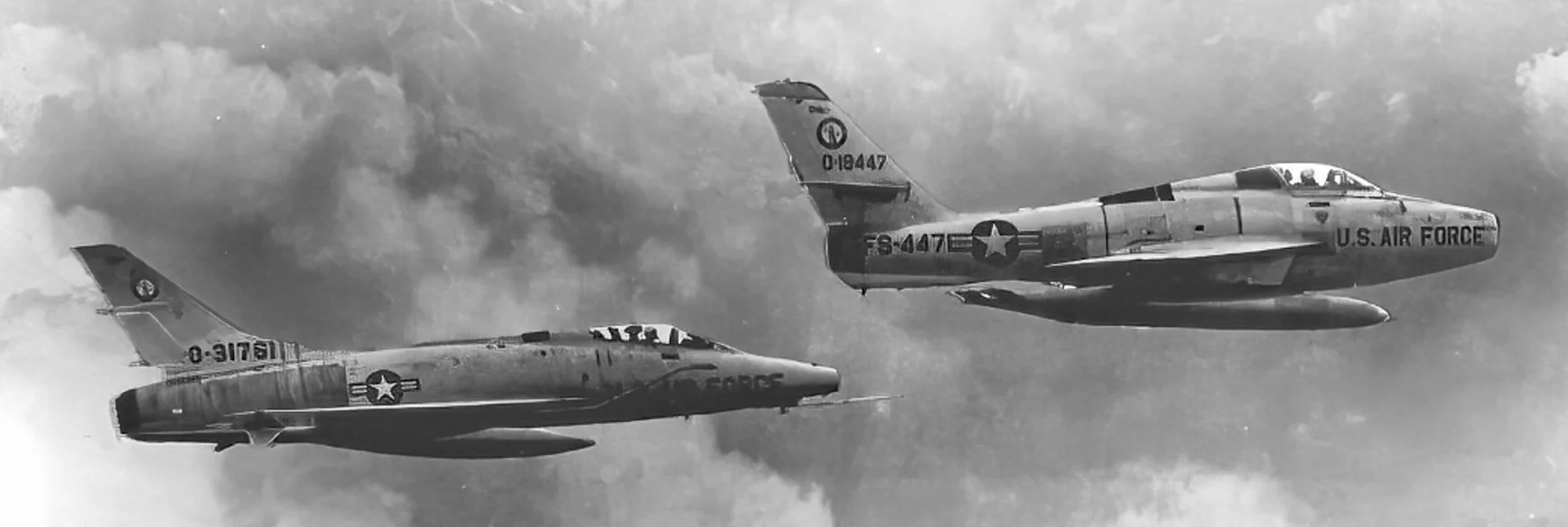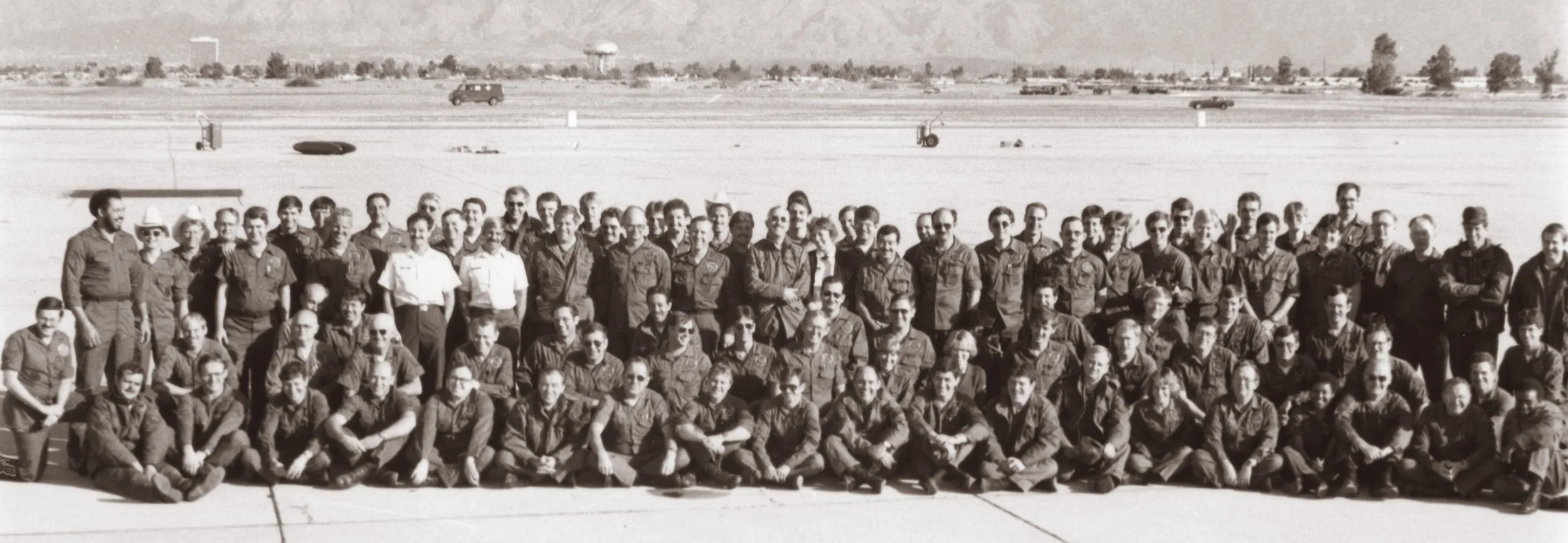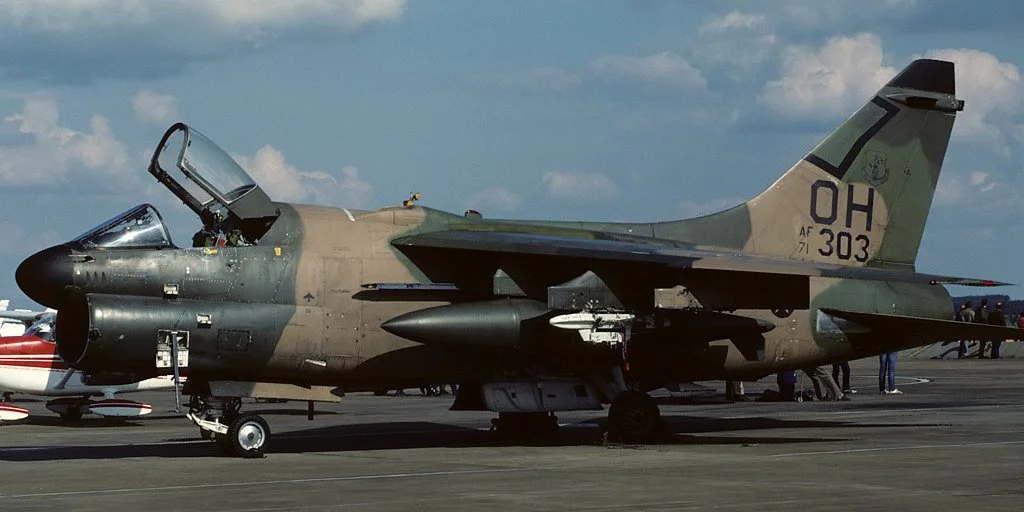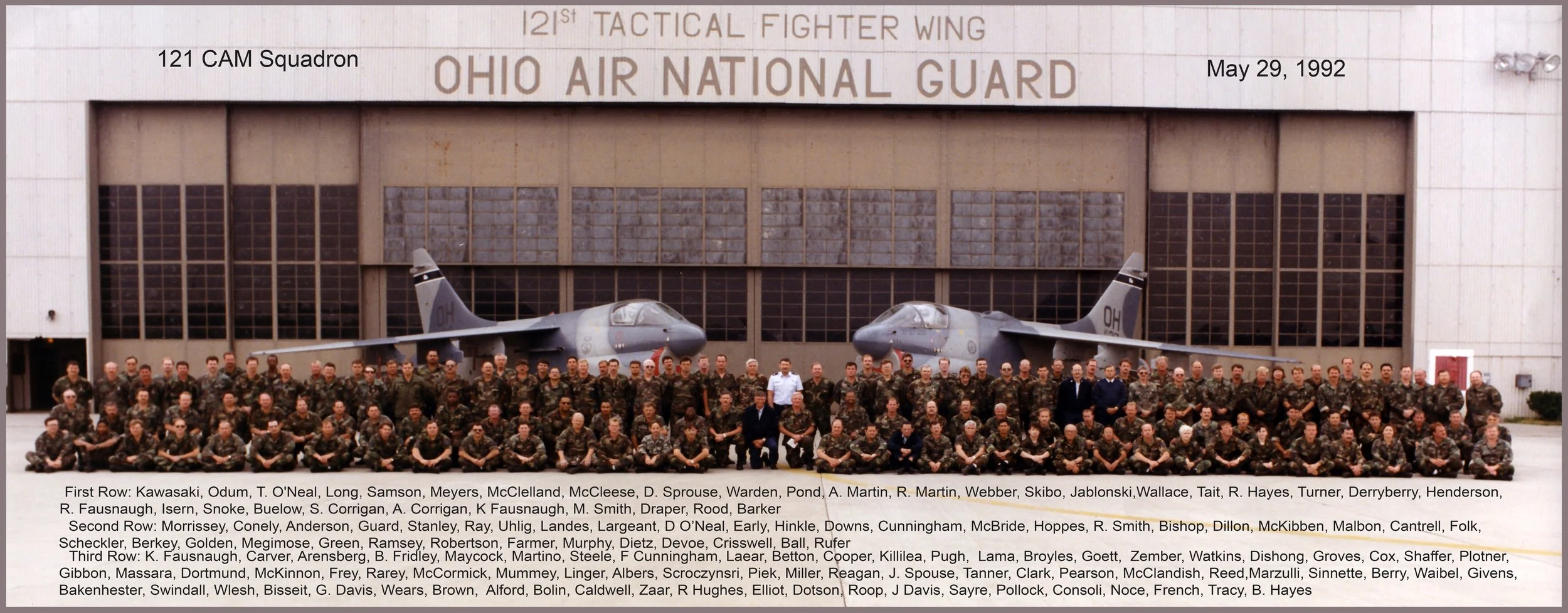The retirees meet on the first Saturday of the month at the Veterans of Foreign Wars Post 9473 at 1420 So. Waggoner Rd. Reynoldsburg, Ohio 43068 for breakfast at 09:00. Friends and family are always welcome.
Due to the construction on Waggoner Road, you can only access the post from the south end of Waggoner Road at Main Street.
Next Breakfast October 4, 2025
"Welcome to your new journey. Here, retirement isn't an end, but a fresh start. Dive into resources, community, and inspiration to make the most of this exciting chapter. Retirement isn’t just about financial security it’s about crafting a fulfilling life.
My hope for this website is not just the history of the unit, but to provide help to both retired and future retirees plan for the next chapter of your life something totally lacking when I retired.
As you plan for the next chapter of your life, we’re hope to introduce a dedicated platform designed to help you navigate retirement with confidence and clarity. We hope to provide insights, resources, and tools to help you make informed decisions about finances, lifestyle, healthcare, and more. Whether you're preparing for retirement or already enjoying your golden years, our goal is to support you every step of the way.
Retirement today is a whole new ball game compared to previous generations. Gone are the days of relying solely on pensions and Social Security now, retirees need to be proactive in managing their finances, healthcare, and lifestyle choices.
Planning for retirement is one of the most important financial decisions you'll make, and staying connected to the right resources can help you feel confident in your future. Follow our social channels for expert insights, practical tips, and the latest updates on retirement planning. Whether you're exploring savings strategies, investment options, or lifestyle changes, this web page is here to support you every step of the way. Don't miss out you
See social links for more information
Here are some key areas to focus on:
Financial Planning: With employer-sponsored pensions becoming rare, retirees must diversify their income sources. Strategies like delaying Social Security benefits, tax-efficient withdrawals from retirement accounts, and considering annuities can help ensure financial stability.
Healthcare Considerations: Medicare enrollment, supplemental insurance, and long-term care planning are crucial. Healthcare costs can be one of the biggest expenses in retirement, so understanding your options is essential.
Adapting to Social Changes: The structure of families has evolved, with blended families and single-parent households becoming more common. Estate planning and asset titling should align with these modern dynamics to avoid future conflicts.
Staying Engaged: Many retirees struggle with the relevant feeling after leaving the workforce. Finding ways to stay connected whether through volunteering, hobbies, or learning new skills—can significantly improve well-being.
Be very mindful of changes both new and old happening in our society today. This should be a time of relaxation and enjoyment, but there are several pitfalls that can derail your plans. Here are some common mistakes to avoid:
Be alert changes in Medicaid, Medicare and Social Security are on the horizon.
- Not saving enough: Many retirees underestimate how much money they’ll need, leading to financial stress later on.
- Claiming Social Security too early: Taking benefits too soon can reduce your monthly payments significantly.
- Failing to plan for taxes: Retirement income is still subject to taxes, and poor planning can lead to unexpected expenses.
- Overestimating your nest egg: Some retirees assume their savings will last forever, but inflation and unexpected costs can deplete funds quickly.
- Ignoring long-term care needs: Many people don’t plan for potential healthcare expenses, which can be a major financial burden.
- Supporting adult children too much: While helping the family is admirable, it can drain your savings and jeopardize your financial security.
- Relocating on a whim: Moving to a dream destination without proper research can lead to regret if the lifestyle doesn’t match expectations.
-Planning and making informed decisions can help you avoid these pitfalls and enjoy a comfortable retirement.
Retirement
Seven Documents You Need to Fill Out Before You Die
Estate planning is the process of establishing a framework to manage your assets upon death, disability or incapacity. It involves creating documents that outline your wishes. While estate planning is not a pleasant task, it is critical that you implement it before you need it.
Here are seven critical documents necessary to cover the aspects of a well-devised estate plan.
1. Last Will & Testament
The fundamental purpose of a will is to outline who will receive your assets upon your death. Another important purpose of a will is to specify guardianship for your minor children. A guardian is one who takes legal responsibility for the care of your minor or incapacitated children after you are gone. It is important to understand that a will does not become effective until the date of death. So it does not provide any benefits during your lifetime. A will can be changed at any time (assuming you are not mentally incapacitated). It can be amended by using a codicil or revoked by writing a new will. A will can also create a trust upon your death (more on this below). If your estate is large enough (over $5.49 million in 2017), you may also need to incorporate federal estate tax planning into your documents.
2. Trust
A trust is a legal instrument that provides ongoing management for your assets. It can be inter vivos (also known as a Living Trust, which exists during your lifetime) or Testamentary (one that is created by your will upon your death). It is a good idea to leave assets in trust if the beneficiaries are minors, incapacitated, or if they are simply not fiscally responsible. The trust document names a trustee who has the responsibility of managing the assets in the trust and determines when and how much of the trust assets to distribute (subject to the terms you have written in the trust). You may want to name a trustee while your child is under a certain age, say 25 or 30. Then, once your child reaches that specific age, they can either act as their own trustee, or the trust can terminate and distribute all of the assets to your child outright.
3. Power of Attorney
A Power of Attorney allows you to empower someone else to act on your behalf for legal and financial decisions. It can be a Durable Power of Attorney, which becomes effective immediately, or a Springing Power of Attorney, which becomes effective upon a stipulated event, typically when you are disabled or mentally incompetent. It is critical that you completely trust the person to whom you provide this power, as he or she can legally act on your behalf.
4. Healthcare Power of Attorney
A Healthcare Power of Attorney (also known as a Medical Power of Attorney) gives a trusted individual the authority to make decisions about your medical treatment should you be unable to do so on your own. No financial authority is granted in this document, only medical power. So you could provide one person the Durable Power of Attorney and another person the Healthcare Power of Attorney if you desire.
5. Living Will
While the Healthcare Power of Attorney authorizes another to make medical decisions on your behalf, a Living Will (also known as a Directive to Physicians) sets out your predetermined wishes regarding end-of-life care should you become terminally ill or permanently unconscious. Essentially it takes the decision to withhold life out of the hands of your medical providers and the ones you love so that they are not burdened by it and so that you can be assured your wishes are respected.
6. HIPAA Release
One of the important provisions of the Health Insurance Portability and Accountability Act of 1996 (HIPAA) is the obligation that medical records be kept confidential. While this is definitely an important requirement, it can have severe unintended consequences. Without the legal authority to share medical records, your family may not be able to obtain important information regarding your medical condition and treatment if you were to become incapacitated. A HIPAA release allows your medical providers to share and discuss your medical situation with whomever you specify in the document.
7. Letter of Intent
A Letter of Intent is a simple, non-binding personal letter to the ones you love expressing your desires and special requests. It may include information regarding burial or cremation, or a specific bequest of collectibles or personal items. While it does not typically have legal authority, it can help to clear up confusion regarding your personal preferences.
Estate planning can be complex and the laws vary widely by state. This article is general in nature and is not meant to provide legal advice. I recommend that you engage the services of an estate planning attorney to discuss your wishes and prepare the appropriate documents.
Documents
Keeping important documents safe is crucial! Whether it's personal records, contracts, or financial statements, having a reliable storage system can save you from headaches down the road. Here are a few approaches:
Physical Storage:
Fireproof & Waterproof Safe: Ideal for storing birth certificates, passports, and other crucial paperwork.
Filing Cabinets: Use labeled folders for easy organization.
Safety Deposit Box: Offered by banks for ultra-secure storage.
Digital Storage:
Cloud Storage: Services like OneDrive, Google Drive, or Dropbox offer encrypted backups.
External Hard Drive or SSD: A local backup solution in case of internet outages.
Document Management Software: Specialized tools for organizing and securing digital files.
Best Practices:
Keep multiple copies in different locations.
Encrypt sensitive documents when storing them
Keep multiple copies in different locations.
Encrypt sensitive documents when storing them digitally.
Regularly update and check your backups.
Unit History
LTC Robert Brown 166TFS 1955 - 1973 Interview
A Look Back at the 121 TFW and the 160th ARG unit history
The 364th Fighter Squadron was established at Hamilton Field, California in December 1942 and was part of the 357th Fighter Group. Became part of the United States Air Forces in Europe army of occupation in Germany in 1945. Inactivated in Germany in August 1946. Ohio Air National Guard.
Hamilton Field, California
P-39 Aira cobra
The squadron emblem which was approved during WW2 features a black crow with one eye open, firing a machine gun with six empty shell casings falling away. The crow sits astride a striking cobra in honor of the Bell P-39 Air Cobra, the first combat plane flown by the unit.
On December 16th, 1942, the group was activated at Hamilton Field, California. Besides a few veterans, all pilots and personnel were fresh out of Air Force schools. After transferring to multiple bases across the country for different phases of training in the P-39 Aira cobra, on October 24th, 1943, 10 months after being created, the 357th Fighter Wing was cleared for combat. During their training period, 14 men had died from accidents. November 3rd, 1943, the 357th started their trek for Europe and on November 30th they moved into Raydon Wood airfield, in Suffolk under the Ninth Air Force. While the group was busy training on their few available North American P-51B Mustangs, the U.S. Air Force realized the need for a long escort fighter and the Mustang fit the bill. On February 1st, 1944, the decision was made to make the Mustang the aircraft of choice for the Eighth Air Force. The 357th was not only re-assigned to the Mighty Eighth but also moved to Station F-373 (RAF Leiston airfield) which was located between the Suffolk towns of Leiston, Saxmundham, and Theberton, where they would remain for the remainder of the war. From this base, on February 11th, the 357th FG flew its first official mission in the form of a sweep to the Rouren area, led by ace and recent Medal of Honor recipient Maj James Howard of the 354th FG. The group’s main role in the air war was to escort heavy bombers, mainly B-17s, and B-24s. These escort missions led to the creation of some untouched records by the Eighth Air Force. After the group’s first aerial victory on February 20th, 1944, downing a Me 109 by 1st Lieutenant Calvert L. Williams, 362nd Fighter Squadron, flying a P-51B (G4-U, serial number 43-6448) nicknamed “Wee Willie”, the floodgates were opened for the 357th. These 313 missions resulted in 595.5 German airplanes destroyed in the air and 106.5 destroyed on the ground for a total of 702 victories. The 357th had 42 pilots become aces, the most of any European Theater of Operations fighter group. The 364th Fighter Group flew 342 missions in P-38 Lightnings and P-51 Mustangs from Honington, Suffolk. The missions ranged from escorting bombers and dive-bombing and strafing targets to area patrol missions across a swathe of land that took in France, Belgium, Holland and Germany. After converting to P-51 Mustangs, the Group also flew long-range bomber escort missions, winning a Distinguished Unit Citation for their defense of B-17 Flying Fortresses on a mission to Frankfurt on 27 December 1944.
P-51B Mustang
The Republic F-84
The Thunderjet began rolling off the production lines in June 1947, and by the time production ceased in 1953, approximately 4,400” straight-wings” in contrast to the swept-wing F-84F variant had been built. The 166th TFS received F84C’s Thunderjet in March 1950 the squadron entered the jet age. In 1952 the jet’s were transferred back to the Air Force and replaced with P-51H’s and Lockheed F-80C’s, in 1955 the unit transitioned to Republic F-84E’s which they flew until 1958 when the Republic F-84F conversion happened.
Korean War Federalization
With the surprise invasion of South Korea on June 25, 1950, and the regular military’s complete lack of readiness, most of the Air National Guard was called to active duty. The 166th Fighter Squadron was federalized on February 10,1951, and assigned to the 122th Fighter-Interceptor Group of the Indiana Air National Guard part of the Air Defense Command as the 166th Fighter-Interceptor Squadron. The squadron initially remained at Lockbourne and flew air defense training missions.
On September 20, 1951, the 166th was reassigned to the Federalized Oregon ANG 142thFighter-Interceptor Group which was headquartered at O’Hare International Airport with no change of mission. However, Air Defense Command was experiencing difficulty under the existing wing base organizational structure in deploying its fighter squadrons to best advantage. Therefore, in February 1952, the squadron was reassigned to the 4706th Defense Wing, which was organized on a geographic basis. However, Strategic Air Command (SAC) had taken over Lockbourne AFB on April 1, 1951 and it had decided to move the 166th to Youngstown Municipal Airport, Ohio, which was accomplished in August 1952. The move resulted in a reassignment to the 4708th Air Defense Wing. The squadron was released from Federal Service and returned to Ohio state control on November 1, 1952, and its mission, personnel and F-84 aircraft at Youngstown were taken over by the 86th Fighter-Interceptor Squadron.
Air Defense Command
After the Korean War mobilization ended, the ADC 86th Fighter-Interceptor Squadron assumed the assets of the 166th Fighter-Interceptor Squadron F-84C’s and many of their personnel. The 166th was re-equipped with F-51H Mustangs which the squadron flew until 1954 when the 166th received refurbished F-80A Shooting Stars that had been modified and upgraded to F-80C standards. With the F-80’s, the squadron began standing daytime air defense alert at Youngstown, placing two aircraft at the end of the runway with pilots in the cockpit from one hour before sunrise until one hour after sunset. The squadron only operated the Shooting Star until January 1955 when the 166th received F-84E Thunderjets that had returned from wartime duty in Korea.
Lockbourne Air Force Base, Columbus, Ohio 1950
F-84-E on new south ramp
166th Republic F-84E’s Davis Mothan AFB (Boneyard) Tucson Arizona 1957
166th Republic F-84E Over Columbus Ohio
Republic F-84E Standing daytime Air Defense Alert, Hanger 505 and tower in background aircraft on old flight line 1955
Upgraded with new F-84F Thunderstreaks in November 1957, the gaining command of the squadron became Tactical Air Command (TAC), however, it remained attached to Air Defense Command in a secondary role. In 1959, the need for active duty Air Defense Command bases and regular Air Force fighter-interceptor operations were diminishing and the intent to scale back operations at Youngstown AFB was announced on 28 October 1959. The Ohio Air National Guard moved the 121st FBG back to Lockbourne Air Force Base on 1 March 1960.
The swept-wing Republic F-84F Thunderstreak evolved from the straight-wing F-84E Thunderjet. The “F” model incorporated aerodynamic improvements such as swept back wings and tail, due to the success of the North American Aviation F-86 Sabre it also featured improved tail and elevator surfaces, a smaller canopy and a redesigned windscreen. With these improvements, the F-84F was introduced in 1949 as a competitor to the F-86.
The prototype first flew on June 3, 1950, Deliveries began in 1954, primarily to the Tactical Air Command (TAC) as a ground support fighter bomber. Armed with six 50-caliber M-3 aircraft machine guns, 24 5-inch rockets and 6,000 pounds of bombs the Thunderstreak was designed as a fighter-bomber capable of attacking ground targets and intercepting high-altitude Soviet Bombers.
Early models of the F-84F were plagued by control and stability problems. The first production models were equipped with conventional stabilizer-elevator tail-planes, which caused an accelerated stall pitch-up problem and degraded maneuverability at combat speeds. By May of 1954, the introduction of a hydraulically powered one-piece stabilizer and side-mounted spoilers improved performance and corrected the high-speed control
The 121 FIG moved to a new ramp at the south end Lockbourne AFB by 1952 with F-84E’s. In late 1950’s shown are Republic F-84F’s and Lockheed T-33A Shooting Star (or T-Bird) And C-47 Skytrain / Dakota. Picture taken from a new aircraft maintenance hangar building 931
Republic F-84F’s Davis Mothan AFB (Boneyard) Tucson Arizona
The 121st Tactical Fighter Wing were called to active duty for a period of twelve months on 1 October. When activated, the wing consisted of three operational units, the Ohio ANG 162d Tactical Fighter Squadron, based at Springfield Municipal Airporto; the Ohio ANG 164th Tactical Fighter Squadron, based at Mansfield-Lahm Municipal Airport, and the 166th TFS.
The mission of the activated 121st TFW was to reinforce the United States Air Forces in Europe (USAFE), and deploy to Étain-Rouvres Air Base, France, a standby USAFE base. However, due to funding shortages, only 26 F-84F Thunderstreaks of 166th TFS was deployed to France, although several ground support units from the 162nd and 164th were also deployed.
On 4 November the first ANG T-33 aircraft arrived at Etain, with the F-84’s arriving on 16 November. On 11 December, the deployed units of the 121st TFW were redesignated the 7121st Tactical Wing. Ground shipments of equipment and supplies arrived from Ohio during January 1962 along with additional supplies and equipment from the Chateauroux-Deols Air Depot.
The mission of the 7121st TW was tactical air support of US Army units in case of an armed conflict with the Warsaw Pact, and alert began almost immediately upon arrival. Four F-84F’s were loaded with armament and maintained on alert 24/7 for continual launch preparedness. However, as the F-84 was a day fighter only, its night alert was of limited use if necessary.
Rotational deployments to the gunnery range at Wheelus AB were also made, where the excellent weather and ranges there provided the Air National Guard pilots an opportunity to re-qualify in air-to-air and air-to-ground weapons delivery. Weather permitting, daily missions at U S Army training ranges in West Germany were also flown to exercise with ground units there. Several ANG fighter pilots were detached as Forward Air Controllers and Air Liaison Officers to work with Seventh Army units, and additional pilots were deployed from Ohio to keep the squadron at full strength.
A NATO exchange program was conducted with the West German Air Force, with 4 F-84’s being deployed to Hopsten Air Base, West Germany with an equal number of German personnel and aircraft being deployed to Etain to fly missions with the 166th. This was the first German Air Force deployment to France since the end of World War II.
In July 1962 the deployed Air National Guardsmen were no longer needed in Europe and the 7121st began to redeploy its personnel to Ohio. All the aircraft and support equipment, however, remained at Etain to equip a new wing being formed there, the 366th Tactical Fighter Wing. The last of the ANG personnel departed on 9 August 1962 living only memories of the Republic F-84F era.
Out with the old in with the new
F-100C Super Sabre fighter-bombers 1962 - 1971
Having left their Thunderstreaks in France, the 166th TFW was re-equipped with F-100C Super Sabre fighter-bombers, which greatly enhanced its mission capabilities. During the mid-1960s the squadron trained with the supersonic jet.
On February 3, 1966, Capt Joe Criswell successfully ejected from his F100C south of Lockbourne AFB, after engine malfunction and failure.
On 22 August 1967, 2LT Edwin L. Rhodes, received fatal injuries in an accident while performing a close air support mission at Campbell, Ky. This was the first fatal accident involving a 166th squadron pilot, while in Air National Guard status in seventeen and one-half years.
Capt Jerry Fair was selected as a TAC pilot of distinction for his performance in an aircraft emergency on a night refueling mission.
On 8 Feb 1968. 2LT Ruel H. Brown was fatally injured when his F-100 crashed south of Indianapolis.
1968
Air Guard wings and groups were hastily recalled to active duty
The experience of Ohio's 121st Tactical Fighter Group illustrates the problems associated with the poorly-handled January 1968 mobilization. The 121st remained at its home station, Lockbourne AFB, Ohio, for nearly four months before the Air Force announced that the group would be sent to South Korea in mid-June. During this interim period, the unit engaged in normal training and was rated fully combat ready by a TAC operational readiness inspection team. Just two weeks before the unit was scheduled to go to Korea, TAC reorganized the 121st into its wing-augmented squadron concept. The original 900–man 140th Tactical Fighter Group was reduced to the 410–man 166th Tactical Fighter Squadron. Surplus personnel were reassigned throughout the Air Force with reassignments based on TAC recommendations rather than those of the Air Guard commander or his staff. Other Air Guard tactical units mobilized in January had similar experiences. Such reorganization and reassignments delayed the Guard's integration into the Air Force, hurt morale, and damaged, at least temporarily, its operational effectiveness. Ironically, units like the 166th that were sent to South Korea found themselves operating on bare bases temporarily without support and maintenance personnel—the same skills that had been stripped from their units when they converted to the wing-integrated squadron organization."
Korea
Integration of the Air Guard into Fifth Air Force operations did not go as smoothly. The previously discussed mobilization and unit integrity problems encountered by Ohio guardsmen had presaged further complications which surfaced after their early summer (1968) arrival at Kunsan Air Base. There, the 166th Tactical Fighter Squadron from Columbus combined with the 127th from Wichita, Kansas, as well as Air Force reservists and individual guardsmen from other units to form the 354th Tactical Fighter Wing.” The reorganization and personnel transfers involved delayed effective operations, slowed the integration process, and generated complaints by disgruntled guardsmen to their congressmen and their local newspapers.”
Unfortunately, problems arising from poor planning were not confined to personnel. The new wing’s two squadrons brought with them F-100Cs, aircraft for which the Fifth Air Force had no spare parts in stock. And, despite the knowledge that F-100Cs were slow in attaining altitude and lacked an effective all-weather air-to-air capability, the wing’s original primary mission was air defense.
By December, the 354th’s F-100Cs were redesignated fighter-bombers to support ground force training.’ By the same time, the wing’s continual aircraft use and its lack of spare parts brought its readiness rate below the Air Force minimum. The loss of four aircraft in crashes and the death of one pilot early in the new year, 1969, aggravated the problem. Furthermore, the wing failed an operational readiness inspection. Extremely cold weather and spare parts shortages contributed to the failure, but the inspection report highlighted operational problems that implied lax training. For example, aircrews were criticized for flying nonstandard formations and achieving poor bombing scores. Air Force inspectors recommended downgrading the combat readiness ratings of the 354th’s two tactical fighter squadrons to marginal.’
With the return of the Pueblo’s crew, air guardsmen in South Korea were scheduled for release from active duty. Their last months overseas, April-June 1969, concluded on a positive note. The 354th Tactical Fighter Wing passed a second operational readiness inspection—both its fighter squadrons regained the fully combat ready ratings they had brought with them the previous summer. The Air Guard in Korea had not enjoyed the unalloyed success their counterparts in South Vietnam had; nevertheless, they had performed a valuable military service for the United States at a time when military resources were stretched thin. The deficiencies revealed by their service could have been minimized by better Air Force planning. F-100 spare parts should have been adequately stocked by the Fifth Air Force when those aircraft were assigned to it. But, more significantly, deployment of cohesive Air Guard units, including maintenance and other support functions, might have minimized many of the morale and operational problems that plagued the air guardsmen in South Korea.
Nellis AFB
USS Pueblo Incident
On 26 January 1968, in response to the USS Pueblo incident, President Johnson mobilized a major portion of the Selected Reserve Force, which included the 166th TFS. Another call-up to active duty occurred in 1968 as a result of the USS Pueblo Crisis. The 166th along with the Kansas ANG F-100C 127th Tactical Fighter Squadron, was federalized and deployed to Kunsan Air Base, South Korea. The federalized ANG squadrons were assigned as part of the 354th Tactical Fighter Wing.
On 25 June 1968, twenty-five-unit F-100-C/F departed Lockbourne AFB, and arrived in Hawaii nine hours later. On the 26th they traveled to Guam and the 27th on to Kunsan Air Base, South Korea. The trip required a total of twenty two flying hours and thirteen air refueling. All aircraft arrived on schedule and the entire operation was a picture of perfection. The very next morning after arrival, the 335th Squadron departed Kunsan and the 166th pilots assumed the alert commitments of the replaced unit. The 127th Fighter Squadron, Kansas ANG, arrived one week later to share the mission and base facilities.
Problems were encountered in the personnel assignment area. The first officers, other than the pilots, arrived late in July. The 166th outstanding NCO’s supervised the enroute support teams for the deployment and the maintenance and supply activities on base with little guidance. A firm manning document was not received until September 1968.The most serious problem for the Kansas and Ohio Squadrons was the lack of supplies. Aircraft parts and engines were going to high priority combat units in Vietnam.
The mechanical condition of the aircraft deteriorated seriously. Early in 1969, the 354th Wing, composed of the two fighter squadrons, failed an ORI and four aircraft were lost as a result of Cs. (Note the engine overhaul by Arrow Decks cause nunerous engine failures an aircraft crashes the Air Force new about this but took the calculated risk due to the Vietnam war). Successful bailouts were accomplished in all but one case.
January 11, 1969 Capt Bob Yeager ejected from a 166th aircraft on 11 January.
On February 26 1969 Capt Douglas Thorn was fatally injured in a takeoff accident. (Engine failure)
On 23 March, Capt Art Draut’s F-100 engine failed over the base and he made a successful flameout landing.
On 27 February and 17 March pilots of the 127th squadron ejected successfully.
The squadrons flew deterrent air defense missions over South Korean airspace during the next year. During the deployment some pilots flew combat missions in South Vietnam while performing temporary assignments with other units.
The squadrons flew deterrent air defense missions over South Korean airspace during the next year. During the deployment some pilots flew combat missions in South Vietnam while performing temporary assignments with other units.
May 28, 1969 a huge Flying Tiger Airline DC-8 parked on the Lockbourne ANG ramp. Two hundred and nineteen happy airmen filed down the steps to the “welcome” sign, and a crowd of anxious wives, children, parents and friends. This scene was repeated again on the 1st and 4th of June as over 500 men returned to their home.
Meanwhile on the parking ramp at Kunsan AFB, Korea was a beehive of activity early June 1,1969. The F-100’s were pre-flighted and loaded in a pouring rain. The first flight took off at day break with another following every thirty minutes. The redeployment with stops in Guam and Hawaii was completed with twenty five aircraft arriving in Ohio on schedule the 4th of June.
The performance of the ANG units at Kunsan in 1968–69 suggested the prerequisites of effective air reserve programs and paved the way for adoption of the total force policy in 1970 which exists today. Aircraft and personnel returned home in June, 1969.
Aircraft upgrade to the F-100D/F was accomplished in 1971
After the 166th returned to the United States The experience of the F-100’s in South Korea showed the Air Force that the F-100C was not a good air defense aircraft. The F-100s were aging and clearly unsuited to the most pressing operational responsibilities in the event of an attack by the North Koreans. In addition, the F-100’s were slow in attaining altitude and lacked an effective all-weather, air-to-air combat capability, essential in Korea. In 1971 the F-100Cs were retired and replaced by F-100D/F Super Sabres, they were received from combat units in South Vietnam that were returning to the United States.
F100-C
Kunsan Front Gate
Following Debriefing last of the operational mission in Kunsan Korea, 1969, Sq. Cmdr. Col Griffith And Harry Martin (Right) get doused.
F 100F
Anderson, Charles S. (64) Bellamy, Timothy R. (24) Benjamin, David R (44). Black Phillip (114) Carruthers, Donald (25) Destefano, Richard C (36) Dillon. Ronald E. (11) Featherston, Richard (94) Jakubowski Benjamin (09) Jones, Michael E. (80) Kienzel, David W. (40) Killien Henry (103) Kunke Frank A (57) Lawrence, William J. (13) Manning, Boyd C. (8) Maxwell, Dwight J (46) Mckibben, Richard D. (28) Mallar, James (93) Miner, Jeffrey (75) Moore, Howard (18) Nelson, Keith E. (65) Newlon, Marion T. (77) O’Dell, Howard (4) Pence, John H (79) Piek, Neal (12) Porter, Donald C (100) Puckey. Theodore (81) Rarey, Paul (82) Reader Lanny R (85) Richards Donald (108) Schiederer (107) Shadloan, Reaford L (51) Snow, Phillip (112) Speakman, Mark D (83) Sprouse, Dane A. (84) Starr, Clarence L. (63) Stasa John F. Jr. (31) Stone, Richard G. (47) Strawser, R (1) Tippie, James W. (42) Thomas Richard (92) Trojack Terry (111) Uhrig, Dennis (48) Wolfel Thomas E (78)
Lockbourne AFB to Rickenbacker AFB / The 121st began conversion to the A-7D Corsair II
In 1974 Lockbourne AFB was renamed Rickenbacker AFB in honor of Captain Eddie Rickenbacker, the World War I “Ace of Aces” and a Columbus, Ohio native. Also in 1974, under the “Total Force Policy”, Guard and Reserve units began to receive newer aircraft and equipment in the 1970s. The 121st began The 121st began conversion to the A-7D Corsair II in 1974
In 1978, the Strategic Air Command functions at the base transferred elsewhere and 12,000 jobs were lost. A phased closing of the base began in 1979.
In 1980, the base was transferred to the Ohio Air National Guard and renamed the Rickenbacker Air National Guard Base. In 1984, 1,642.62 acres (of the original 4,371.07 acres) were conveyed to the Rickenbacker Port Authority (RPA), which renamed the site Rickenbacker International Airport (RIA) and established the passenger terminal. RPA merged with the Columbus Airport Authority in 2003, forming the Columbus Regional Airport Authority (CRAA), which currently owns and operates the RIA. transferring portions of the base to the newly established Rickenbacker Port Authority and the Ohio Air National Guard.
The base officially closed in 1994 after the last of its operations had been transferred. In the mid 1990s to early 2000s, Rickenbacker became a transportation hub for commerce. The airport was established as a Foreign Trade Zone and houses US Customs offices. This designation triggered major industrial development around the former base in the late 1990s that continues to present day. The Ohio Air 121 TFW / ARW and Army National Guard maintain a portion of the airport In 1974 Lockbourne AFB was renamed Rickenbacker AFB in honor of Captain Eddie Rickenbacker, the World War I “Ace of Aces” and a Columbus, Ohio native. Also in 1974, under the “Total Force Policy”, Guard and Reserve units began to receive newer aircraft and equipment in the 1970s. The 121st began The 121st began conversion to the A-7D Corsair II in 1974
In 1978, the Strategic Air Command functions at the base transferred elsewhere and 12,000 jobs were lost. A phased closing of the base began in 1979.
In 1980, the base was transferred to the Ohio Air National Guard and renamed the Rickenbacker Air National Guard Base. In 1984, 1,642.62 acres (of the original 4,371.07 acres) were conveyed to the Rickenbacker Port Authority (RPA), which renamed the site Rickenbacker International Airport (RIA) and established the passenger terminal. RPA merged with the Columbus Airport Authority in 2003, forming the Columbus Regional Airport Authority (CRAA), which currently owns and operates the RIA. transferring portions of the base to the newly established Rickenbacker Port Authority and the Ohio Air National Guard.
The base officially closed in 1994 after the last of its operations had been transferred. In the mid 1990s to early 2000s, Rickenbacker became a transportation hub for commerce. The airport was established as a Foreign Trade Zone and houses US Customs offices. This designation triggered major industrial development around the former base in the late 1990s that continues to present day. The Ohio Air 121 TFW / ARW and Army National Guard maintain a portion of the airport
Captain Eddie Rickenbacker, the World War I “Ace of Aces”
New Front Gate
Base back gate removed
GUNSMOKE
Gunsmoke is a biennial air-to-surface gunnery meet sponsored by the USAF Tactical Air Command and hosted by the USAF Fighter Weapons Center at Nellis AFB. Fourteen fighter units represent Tactical Air Command, U.S. Air Forces in Europe, Pacific Air Forces, Air National Guard and Air Force Reserves. For two weeks, aircrews, maintenance personnel and munitions load teams are competing for the individual and team awards to be presented today. Aircrews have been scored in basic weapons delivery, tactical bomb delivery, and navigation/attack profiles. Maintenance crews earned their points through maintenance effectiveness evaluations conducted throughout Gunsmoke. Aircraft munitions load teams were rated on weapons load speed, precision, technical expertise and safety demonstrated during their aircraft combat servicing competition. Individual and team awards are given to the top scores in each of the aircraft competing (A-7, A-10, F-15E, F-16, F-111). The best maintenance and aircraft munitions load teams, regardless of aircraft type, receive top team awards. One maintenance individual will receive the Top Crew Chief award. For the gunnery competition, one unit will win the Top Team award and one individual will earn the distinction as TOP GUN.
The Rapid Deployment Joint Task Force (RDJTF)
West Germany, being the last NATO deployment for the squadron with the Corsairs. Due to the aging A7D the wing was not recalled for the Gulf War of 1991. The Rapid Deployment Joint Task Force (RDJTF), as the organization was officially designated, was activated on 1 March 1980 at McDill Air Force Base, Florida. It was established as a part of U.S. Readiness Command (REDCOM). The RDJTF was initially commanded by Lieutenant General P.X. Kelly, USMC. The 100,000-member Rapid Deployment Force is being readied by the Pentagon for possible use in the event of a Soviet threat to eastern access to Persian Gulf oil. The 1980s brought new and more demanding tasks when the 121st became part of the Rapid Deployment Force and was ultimately integrated into war plans as a part of U.S. Central Command. Training for this high-priority mission was intense and included many deployments, exercises, and evaluations. Windover Utah’ Cornet Fox, at Leck Air Base, West Germany in May 1986, saw the squadron stage through Lajes Air Base, Azores, and RAF Mildenhall, England before arriving in West Germany A deployment in July and August 1988, to Spangdahlem Air Base,
A-7Ds Davis Mothan AFB (Boneyard) Tucson Arizona
Fly Over Ohio State Stadium November 17, 1984
Ohio State 21 Michigan 6
Lead BG Miles Durfey, Rt. Wing Maj. Jim Mc George, Lt. Wing Ltc. Dick Jamesom, Slot Capt. Jim Wenzell
121st Support Aircraft
Beechcraft AT-11 1941-1951
Beechcraft C-45-H 1954-1960
T-29-D 1973-1979
T-28 Trojan 1958-1959
Douglas C 47 1946-1966
C-131-E 1975-1989
Unit Training Aircraft
Douglas C 54 Skymaster 1966-1974
C-26 1985-1995
T-33-A or T Bird
History of the 160th Air Refueling Group Cleveland to Akron-Canton and the 145TH Air Transport Squadron
The heritage of the 160th actually begins 15 years before its establishment when the National Guard was being reconstituted and returned to state control following World War II. Veterans and others from Northeastern Ohio joined the 112th Bombardment Squadron at Cleveland Hopkins Airport in 1946 and some of these individuals would become the charter members and leaders of the 160th. The 112th originally flew A-26 aircraft and was activated for Korea. In 1952, the 112th was transferred to Akron - Canton Airport with F-51 aircraft now assigned. When the 112th was moved to Toledo Municipal Airport and converted to jet fighters in 1956, a new unit, the 145th Air Transport Squadron, was established at Akron Canton with a portion of the 112th forming the initial cadre. The 145th mission was Aeromedical Evacuation. The C-46D, an obsolete WWII era cargo hauler, served as an interim aircraft from 1956 to 1958 when it was replaced by the C-119J “Flying Boxcar”. Although it was also outdated, the C-119J was still a capable and versatile aircraft and it was a significant improvement for the 145th.
C-46D Curtiss Commando 1956
Activated as the 145th Air Transport Squadron, Medium (AE), at Akron-Canton Municipal Airport, North Canton, Ohio on March 17, 1956. Many of the unit’s original members came from the 112th Fighter Interceptor Squadron which had relocated to Toledo Municipal Airport, Toledo, Ohio. The first aircraft at;sigried to the new unit were C-46D Curtiss Commandos from World War II inventories. The 145th flew the C-46 from March, 1956 to February, 1958. This obsolete WWII era cargo hauler served as an interim aircraft to keep pilots current in their flying skills until better aircraft became available.
On February 1, 1958 The145th Air Transport Squadron was redesignated as the 145th Aeromedical Transport Squadron (Light). The change in designation brought both a change in mission and The 145th was now flying the C-119J Fairchild Packet flying Boxcar aircraft. Their mission was to transport medical evacuees. The C-119J was flown until February 19, 1962.
145th C-119J Fairchild Packet flying Boxcar aircraft. Note the rear clam shall doors
1960’s
Clinton County and the Establishment of the 160TH
Facilities at Akron – Canton were not adequate to support larger aircraft and expanded missions. On July 8, 1961 the unit was redesignated 145th Air Refueling Squadron (Tactical the 145th was transferred to the newly constructed Clinton County AFB near Wilmington, Ohio. Its mission was changed to air refueling and the C-119’s were replaced by KC-97F and G aircraft. Organizational structure was updated with establishment of the 160th Air Refueling Group as a headquarters and support organization for the 145th. The new mission was a busy one with numerous cross-country operations. In 1964, the 160th participated in Operation “Ready Go”, the first all ANG non-stop deployment of fighter aircraft to Europe. The 145th flew missions from Ernest Harmon AFB, In 1965, the KC-97G’s were upgraded to KC-97L’s with addition of two J-47 jet engine pods mounted to the outboard wings. This significantly improved the operational capability and safety margins of the aircraft. A “Queen Bee” contractor under the supervision of the 160th overhauled all of the J-47 jet engines for the Air Guard. In 1967, the unit and its aircraft were tested by a challenging overseas mission, Operation “Creek Party”. The 160th was recognized with its first Air Force Outstanding Unit Award in 1969.
The KC-97F was a four-engined propeller-driven aircraft. It flew so slow that it could only refuel F-84s, RF-84s, F-100s, F-101s, and F-105 aircraft. Other jet fighter aircraft were simply too fast for the KC-97F. Aircraft modernization continued when in 1963 all KC-97Fs were replaced with KC97Gs. The “G” model, which was flown from 1963 to March, 1965, largely increased the fuel-load capacity of the aircraft; part of this came from fuel tank pylons that were carried under the wings, and improved the KC-97s performance.
First KC-97F, March 1962
KC-97 and G, 1961 to 1965
KC-97L 1965 to 1975
When severe structural and corrosion problems forced TAC to retire its oldest tankers, the KB-50Js, J-47 jet engine pods on the KB’s became available for use on the KC-97s. The external fuel tanks were removed, the jet pods installed, and the “G” model became the “L”. The additional thrust of the jet pods vastly improved the performance and safety of the aircraft. Additional improvements in radar and navigation equipment were also made during this period.
Operation Creek Party
In 1967 the Air Force called on the Air National Guard’s Air Refueling units to provide Tanker support in Europe when SAC KC-135’s were deployed to Southeast Asia for the Vietnam conflict. This began Operation Creek Party, a continuous rotational mission flying out of Rhein Main AB, Germany. The success of this operation, which would continue until 1975, demonstrated the ability of the Air Guard to perform significant day-to-day missions without being mobilized. The 160th was one of the “Charter” units in the first Creek Party deployment and routinely participated in four Creek Party rotations each year. A typical rotation included four to six aircraft and approximately 90 support personnel for a seventeen-day period. Mission taskings would often require four to seven sorties per day refueling as many as sixteen receiver aircraft per sortie. When the 160th ended its Creek Party participation, it had safely flown more than 426 transatlantic crossings.
The year 2025 is the 50th anniversary of the KC 135s station at Rickenbacker
KC-135A, 1975 to 1983
As the military began to implement the Total Force Policy, the decision was made to turn over part of SAC’s air refueling assets to the Guard and Reserve by transfer of the all-jet KC-135A’s. The 160th was cted to be the first ANG unit to convert to this mission. Al though the J-57 engines used an outdated system of water augmentation to increase thrust, the KC-135A’s speed, hauling capacity and global range allowed the 160th to perform an increasing array of high priority missions worldwide.
The 160th became the first Air Guard unit to convert to the KC-135A all jet tanker aircraft. It was the first ANG unit to perform the Strategic Air Command (SAC) Alert mission and pass a SAC Operational Readiness Inspection. It was soon participating in SAC overseas Tanker Task Forces and other priority missions throughout the world. In 1984, the KC-135A’s were reengined and redesignated as KC-135E’s. The turbofan engines provide a dramatic increase in performance, safety and reliability.
KC-135E, 1983 to 1991 1980’s Worldwide Missions and the KC-135E
In the early 1980’s, the Air Force began a program to update and install new engines on the KC 135, redesignating these aircraft as “R” models. The slow pace of this program would leave the reserve forces with an increasingly unreliable “A” model for many years. Starting in 1984, to address this problem, a program was developed to utilize compatible TF-33-PW-102 turbofan engines and pylons from commercial Boeing 707 aircraft that were being retired from airline service. The result was the KC-135E. Thrust per engine was increased to more than 16,000 pounds, an increase of nearly 20 percent. provide a dramatic increase in performance, safety and reliability. The unreliable water augmentation was gone and thrust reverse allowed the “E” model to operate from shorter runways. These and other modifications made the aircraft much more reliable and capable for its increasingly global mission. During the 1980’s, the 160th saw a period of aircraft modernization, increasing mission challenges and noteworthy achievements. Their new capability coincided with an increased emphasis on the conventional warfare mission, larger mobility exercises and more deployed training events in the U.S. and overseas. 160th tankers could be seen almost anywhere in the world as the unit supported major European exercises from bases in England and Spain, as well as activities in the Pacific from Alaska, Hawaii and Wake Island. In 1985, a 160th aircraft and crew won the Concourse D’ Elegance award at the International Air Tattoo at RAF Fairford, UK, and in 1987, the 160th won the competition an unprecedented second time. This established a worldwide reputation for aircraft excellence. In 1988, the 160th received the first of three Allan P. Tappan awards.
Farewell to SAC and the Deactivation
September 1991 brought the stand down of the SAC Alert mission. The 160th has maintained a continu ous alert status for more than 16 years. The post Cold War military reorganization and downsizing of the active force led to the next major change when the 160th began conversion to KC-135R aircraft on 11 October. In June 1992, the Strategic Air Command was deactivated and the 160th was assigned to the new Air Mobility Command. Finally, in September 1993, the 160th was deactivated, ending a proud 32-year history where the unit pioneered new missions for the Air Guard and achieved an outstanding record of flying safety and other accomplishments. Unit members and the 145th Air Refueling Squadron became part of the 121st Air Refueling Wing where the heritage of the 160th and its air refueling mission resides today.Farewell to SAC and the Deactivation September 1991 brought the stand down of the SAC Alert mission. The 160th has maintained a continu ous alert status for more than 16 years. The post Cold War military reorganization and downsizing of the active force led to the next major change when the 160th began conversion to KC-135R aircraft on 11 October. In June 1992, the Strategic Air Command was deactivated and the 160th was assigned to the new Air Mobility Command. Fi nally, in September 1993, the 160th was deactivated, end ing a proud 32-year history where the unit pioneered new missions for the Air Guard and achieved an outstanding record of flying safety and other accomplishments. Unit members and the 145th Air Refueling Squadron became part of the 121st Air Refueling Wing where the heritage of the 160th and its air refueling mission resides today.
The 160th was activated for Desert Storm on December 20, 1990, to March 15, 1991
The 160th was one of the first Air Guard units to deploy aircraft after Iraq’s invasion of Kuwait in August 1990. Aircraft and volunteer aircrews were heavily involved in “Air Bridge” refueling missions supporting deployment of combat forces to Southwest Asia. After the initial response, aircraft, aircrews and support personnel began rotational “DESERT SHIELD” deployments to a provisional Tanker Task Force operating at Jeddah, Saudi Arabia. These “volunteerism” missions ended on 20 December when the 160th was activated. Deployment began on 28 December and the 160th became part of three Provisional Air Refueling Wings at Abu Dhabi, Dubai, and Jeddah. Additional personnel augmented a regional support base at Moron AB, Spain while others deployed to CONUS bases to “backfill” for deployed active duty personnel. Combat flying missions for Operation Desert Storm commenced on 17 January 1991. The 160th compiled a remarkable record of mission accomplishment during combat operations. When hostilities ended, the 160th returned home on 14 March 1991 to a tremendous welcome by families and friends.
Desert Storm Prelude
When Iraq invaded Kuwait in August 1990 the members of the Ohio Air Guard units at Rickenbacker were just as surprised and unprepared as the rest of the country. At the time it was not clear if the Iraqis would stop at the Kuwait border or continue into Saudi Arabia and seize the oil fields of the southern Gulf. When President Bush ordered the deployment of the 1st Tactical Fighter Wing and the 82nd Airborne Division it was clear that we were going to be very busy. Within a week most of the 160th aircraft were providing air refueling support to deploying forces and the first Ohio Guardsmen had already set foot on the sands of Arabia. The ANG response was under volunteerism and at the time nobody knew what would happen to volunteers if war broke out. Fortunately, the Iraqi’s halted their advance and the forces took up positions that they would hold until January. Our volunteers returned on schedule.
By the end of September, the initial deployment of forces was mostly complete, and the “Air Bridge” activity slowed. The 160th joined other Guard and Reserve air refueling units in a rotational Tanker Task Force at Jeddah, Saudi Arabia. During October and November, the flying tempo remained high while all units busily prepared for an expected call-up. Chemical Warfare Defense Training was a top priority for the 160th since the Strategic Air Command had never required that training and most personnel did not even have the equipment. That changed quickly. The 121st Tactical Fighter Wing was a key unit planned for assignment to U.S. CENTCOM. They had trained hard and were well prepared, however, the A-7D aircraft had structure al problems and lacked the latest weapons delivery capability. It was also slower and more vulnerable than the F-16. The Air Force decided that the A-7’s of the 121st would not deploy. Although nobody in their right mind wants to go to war, no soldier wants to be told to stay be hind while someone else does their job. It was a bitter disappointment.
For the 121st Security Police Squadron it was a different story. They became the first Rickenbacker unit to be called-up. Deploying to Bahrain, they would soon have some exciting times. In early December, the 160th received preliminary notification that they would be part of the call-up. It would be a “Call-up by Tailored Unit Type Code (UTC)” meaning only personnel with the needed specialties would be activated. For the 160th this was about 25 percent of the Group. Events were a blur as the pace of planning and preparation became furious. The official call-up date was 20 December with the ADVON departing on 28 December. Activity was planned so that everyone deploying could spend Christmas with families. The 1990 holiday sea son was subdued as soldiers and airmen faced an uncertain future with war imminent.
Deployment and Bed-Down
On 28 December 1990, the 160th ADVON Team members said their farewells to families and colleagues and departed Rickenbacker on a cold, snowy afternoon. After a late-night fuel stop at Moron AB, Spain, the aircraft continued to Saudi Arabia, landing at a hot and dusty Jeddah, the main base for SAC’s tankers and bombers in the area. They were greeted with news that the base was under Condition Yellow because of Iraqi SCUD Missile activity. Welcome to Saudi Arabia! They remained at Jeddah for 3 days awaiting clearance to proceed to final destinations in the United Arab Emirates. On New Years Day of 1991, the ADVON teams arrived in Abu Dhabi and Dubai.160th aircraft and personnel joined other ANG and Reserve units to become part of three Provisional Wings; the 1709th at Jeddah with Kansas and Grissom AFB Reserves, the 1712th at Abu Dhabi with Chicago, and the 1713th at Dubai with Pittsburgh and Knoxville. The Supply element was assigned to a SAC theatre support operation at Moron AB, Spain. The loss of unit integrity was disappointing, but everyone realized it was required by operational necessity. Key personnel worked around the clock to set up these new provisional units, integrate the personnel and establish working relationships with our Arab hosts that owned and operated the civilian airports where we would be based. Similar coordination was necessary with active units who operated the military enclaves at the airbases of Al Dhafra, Al Minhad and Prince Abdullah. Deployment was delayed while “Tent City” billeting was being constructed. Finally, aircraft and personnel began to arrive, and the units started to fly orientation missions. Aircrews soon learned the hazards when they found themselves within fifty miles of the Iraqi border, almost within missile range of hostile aircraft. This was not a comforting thought while flying the unarmed and vulnerable tanker. Meanwhile, the 121st Security Police Squadron was busy provid ing airbase defense at Shaikh Isa AB, Bahrain. They had departed Rickenbacker on 20 December, arriving in Bahrain on Christmas day. They were integrated with the 35th Tactical Fighter Wing. Billeting was another “Tent City” on the base where more than 6,000 personnel were packed into an area planned for 1,800. Bahrain was much closer to Kuwait and the expected combat area so defensive preparations were an extremely serious business. The deadline of 15 January was quickly approaching, and Iraq was still refusing to withdraw from Kuwait. Everyone expected war to start on that date and despite all the hard work the units were not as ready as they wanted to be. Personnel, equipment and aircraft were still enroute. Would they arrive in time or would the 15th find the Guard units still short handed? It was a time of great anxiety.
Combat Operations Redeployment And Homecoming
The pace of action remained heavy as new targets were hit. Tank er air crews flew every day and support staffs worked round the clock to accomplish the necessary planning and coordination. Ground crews turned and re-launched aircraft in minimum time. Security units continuously searched for any sign of terrorists. We were conducting the most successful air campaign in the history of warfare. Nevertheless, Iraq showed no sign of being ready to surrender and was still capable of in flicking damage. Even with air supremacy we could not locate and destroy their mobile SCUD missiles. The tanker bases were well beyond range but the Security Police at Bahrain learned what it was like to be under enemy fire. The base was under Condition Red fifty-three times and SCUD’s struck nearby on three occasions. Most memorable was when a SCUD was intercepted directly over the base by a Patriot missile and debris fragments fell on the compound.
Although allied casualties remained light we were saddened by every loss, whether from hostile action or accident. Tankers experienced a midair collision, an in-flight fire and a multiple engine loss from wake turbulence. There were many near misses. On 24 February the start of the ground war brought redoubled effort and maximum sortie production. During this surge the Air Guard tankers were flying close to a 2.0 sortie rate, meaning that many aircraft and aircrews were flying two missions per day, a level of production rarely seen with large aircraft. This was the result of seven months of preparation and hard work. We cheered the news of Coalition success, and when Iraq agreed to a cease-fire on 28 February it was celebration time at our compounds.
Redeployment And Homecoming
Victory and the end of the fighting brought first relief, and then un certainty. Would we be going home or would we stay in the theatre to enforce the fragile peace? Would the Air Force units that had been there since August go home first? The answer came in early March. The Arab hosts wanted their airports back and the Guard and Reserve units would be going home as soon as possible. We didn’t have to be told twice to start packing
By the second week in March the provisional tanker wings were being deactivated, and units resumed their original identity as they began redeployment to home bases. 160th aircraft stopped at Moron AB, Spain for fuel and picked up the Supply element that had been supporting B-52’s and other USAFE operations. The return trip was a happy contrast to the one we had made 3 months previously. We were told that there would be a special homecoming but none of us were prepared for the huge and enthusiastic welcome. The tankers flew in formation across the airfield and landed to meet a cheering and flag waving crowd of thousands, bands playing patriotic music, the Governor, the Adjutant General, city mayors, other dignitaries but most of all the embraces of families and loved ones. It was a time that none of the participants will ever forget.
In the weeks and months that followed those who had been called up were gradually released from duty. Members took leave and then re turned to a slower pace of catching up on equipment maintenance and administrative backlogs. Not everyone got home in March. The 121st Security Police Squadron did not return until mid-April, and some personnel serving as active duty backfills were gone until early summer. Service members and Guardsmen were the center of much attention and praise. The military had regained public respect and appreciation that it had not seen since before Vietnam. Members were cheered during parades on the 4th of July, and on 11 November, the veterans of Desert Storm marched down High Street in Columbus and received the Governor’s salute in the formal homecoming parade. Although the 160th did not receive a specific award for its service, The Provisional Air Refueling units of Desert Storm all received the Air Force Outstanding Unit Award as did all the 160th members who deployed
Farewell to SAC and the Deactivation
Farewell to SAC and the Deactivation September 1991 brought the stand down of the SAC Alert mission. The 160th has maintained a continuous alert status for more than 16 years. The post Cold War military reorganization and downsizing of the active force led to the next major change when the 160th began conversion to KC-135R aircraft on 11 October. In June 1992, the Strategic Air Command was deactivated and the 160th was assigned to the new Air Mobility Command. Finally, in September 26 1993, the 160th was deactivated, ending a proud 32-year history where the unit pioneered new missions for the Air Guard and achieved an outstanding record of flying safety and other accomplishments. Unit members and the 145th Air Refueling Squadron became part of the 121st Air Refueling Wing where the heritage of the 160th and its air refueling mission resides today.
Former Commanders B Gen (Ret) Edward (Ret) Power Col (Ret) William J Ingler Assist Col Serdt in folding and casing the unit flag
Re-designated: 121 Air Refueling Wing 16 January 1993
160th Air Refueling Group, Retirement of the colors
With the end of the Cold War, a major reorganization of the Air Force was soon underway which would bring about the most significant mission change in the history of the 121st. After 35 years of flying fighters, it was to become an air refueling wing. In 1992, the A-7Ds were flown to storage at Davis-Monthan AFB, Arizona Re-designated: 166th Air Refueling Squadron, 16 January 1993, and the first KC-135R Stratotankers were received. The 121st also assumed base support responsibili ties. The 121 TFW and 160 ARG were combined to form a super-wing, 121 in September 1993. The 121st lost several entire sections of maintenance support; the Weapons Branch, most of the Avionics Branch, and much of Field Maintenance personnel had their jobs deleted or converted to fill new sections required to support the new mission under the conversion to Tankers. In October 1993, after a year of getting settled, losing the fighters, and gaining the Tankers, the 121 ARW combined with the 160 ARG to form the 121 ARW. With this consolidation, the 121st became a “Super Wing” by gaining the 145th Air Refueling Squadron. This combination was less than enthusiastically received by many rank-and-file members. There was a long-standing “Red Tail-Blue Tail” animosity to be overcome. Nevertheless, the pace of “Real World” commitments greatly increased and demanded the cooperation and professionalism of all to achieve mission success. At this time, KC-135R aircraft avionics modernization began with Pacer Crag, which ran for 10 years. From 1993-95, the now combined 121st ARW super wing began flying from bases in southern France and Italy to support strike aircraft during Operation Deny Flight missions over the Balkans. The unit was also a fixture at Incirlik Air Base, Turkey, as well as Prince Sultan Air Base, Saudi Arabia, supporting Operations Northern Watch and Operation Southern Watch restricting military flights over Iraq. This started a series of international support missions that continued until 9/11. In 1994, the 121st was called to support Provide Comfort/Hope over Kosovo. Missions were flown from France and Italy as well as Gielenkirchen, Germany.
In 2001 at the outset of the terrorist attack known as 9/11, the 121st was tasked within the hour and generated the first of numerous refueling and support flights over the USA four hours after the attack began; they were known as “Caps”. Tasking ranged from NYC, DC, New Orleans, Seattle, and Texas. This was known as Op eration Noble Eagle. The 121st ARW had the distinction of flying more Noble Eagle missions than any other unit during the first 6 months in addition to supporting Endur ing Freedom. From 1991-2, the 121st ARW deployed to Turkey with 6 aircraft and support personnel to participate in Operation Enduring Freedom over Afghanistan, as well as continuing support for Southern Watch missions. Numerous other missions were in support of ferrying aircrew, prisoners, personnel, and wounded in theater. The pace initially was 24-hour/7 day a week. In addition to domestic tasking, the 121st led a nine-month deployment to Turkey with 7 aircraft, combined with the California unit from March AFB. They collocated with aircraft from Meridian, MS to support Deny Flight as well as operations in Afghanistan. These missions were eventually combined as part of Enduring Freedom. The Air Force took over the mission in late 2002.
In 2004, the 121st mobilized and deployed for 4 months to a Middle Eastern bare base location known only as Site 41. This was in direct support of Iraqi Free dom. After Saddam Hussien was captured and Iraq declared secure 4 months later, the 121st was redeployed home. This particular deployment broke a trend in that, for the first time, the support aircraft were deployed forward of the attack aircraft. From 2005 until today, the unit has been tasked to support operations from Guam and other worldwide sites numerous times. Since 2014, the unit regained Alert taskings and maintains a constant presence at a Middle Eastern site to support the intervention against the Islamic State in the Levant. (ISIL), The unit was downsized in 2012 from a super-wing to a single squadron; the 145 ARS was retired. In addition to the combat deployments, the unit has also been very heavily tasked with airlift missions during national emergencies. Immediately following Hurricane Katrina in August 2005, the 121 ARW was one of the first units to send aircraft into Louisiana filled with supplies and troops. Similar missions were flown in September 2005, after Hurricane Rita. Though the pace of operations has slowed significantly since 9/11, the Real-World importance of the various international missions of the 121st remains high.
121 Aircraft Generation Squadron July 1999 RANG
Hanger 931 Demolished 2023
Replacement
2023 Reunion Pictures
Piekneal@gmail.com





















